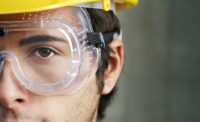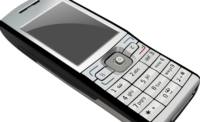Reducing workplace injuries is an ongoing concern for industrial companies. Some enterprises believe business intelligence (BI) systems could help them meet that goal. BI looks at descriptive analytics, which show what happened in the past. Enterprises then may apply predictive analytics to the findings from BI software to determine how to improve safety.
Some BI vendors also blur the lines between descriptive analytics and prescriptive analytics, which indicate what may happen. Although the traditional definition of BI relates to descriptive analytics, some platforms predict things, too. Here's a look at how BI and similar technologies could reduce injuries at work.
Determining where weak spots exist
Workplace injuries cost the U.S. economy at least $2 billion per week. When people get hurt, they may get sent home for extended periods to rest, or move into other roles that allow them to heal while remaining productive. Either of those cases put companies under pressure by requiring them to compensate for the change, often by training other workers to fill the gaps.
One way for companies to apply BI to cut down on injuries is to look at historical data to find out where or how substantial numbers of incidents occurred. Such data could indicate a need for improved training, better equipment or different safety procedures associated with the work.
Using connected devices to achieve better awareness
BI platforms pull data from internal and external sources. At the company level, that may mean the information comes from wearables, such as connected Internet of Things (IoT) devices. One example that combines the IoT with analytics to keep workers safer is from Japan's NIPPO Corporation, a construction company.
That brand partnered with Fujitsu to implement the IoT for increased safety. It gave workers devices with SOS buttons they could press after falling or becoming ill at work. Those gadgets could tell where workers were within three to five meters. The company previously reported it was difficult for workers to look out for each other's safety because employees are often alone or scattered through an expansive worksite.
Besides giving the enterprise improved visibility that allows sending help where it's needed, the data could inform a BI platform. For example, if the company determined that most injuries over the past year occurred to lone workers, it might implement a system where people always work in pairs.
BI platforms enable more comprehensive business overviews, since they pull information from various parts of a company and combine it. That characteristic could be helpful when enterprises want to know where things are going wrong. It may indicate safety problems exist in an unexpected part of the business.
Showing which tasks cause the most documented injuries
Machine learning also applies to BI in many cases. It uses algorithms that learn without needing constant training. Such systems get more accurate with use. One study looked at more than 1.2 million workers' compensation claims in Ohio. Researchers applied machine learning to determine the best preventive measures.
The investigation examined claim counts and rates for more than 200 industries, plus concluded which careers result in claims that are most likely to require people taking time off from work. The team wants to use its findings to develop preventive resources for the most at-risk workers.
Coaching employees to help them avoid getting hurt
Although many industrial workers receive training about how to prevent injuries, that education can't give them corrective information to help them stay safe and healthy. SoterSpine is a wearable device co-developed with a mining engineer. It continuously collects data as people move. Then, analytics in the background examine the movement behaviors and send users their risk scores, plus tips to help them change their positioning or make other improvements.
The company's founders realized back injuries rarely happen suddenly. Instead, they occur after a person puts their body through a prolonged period of abuse due to movement mistakes. They said their product suits any workers that participate in manual tasks.
This wearable clips onto an individual's clothing to track musculoskeletal movements throughout the workday. The results of trials carried out by Soter Analytics, the company behind SoterSpine, showed the product reduced the risk of musculoskeletal injuries by up to 70%. Employers get aggregated data for all workers using the SoterSpine device, too.
Data can help determine actions to take
As these examples show, data from BI platforms or similar options that collect data for analysis can help employee safety professionals make meaningful changes to keep the workforce safer. The accessible information helps them understand trends and problem areas, then make decisions without relying on assumptions.




